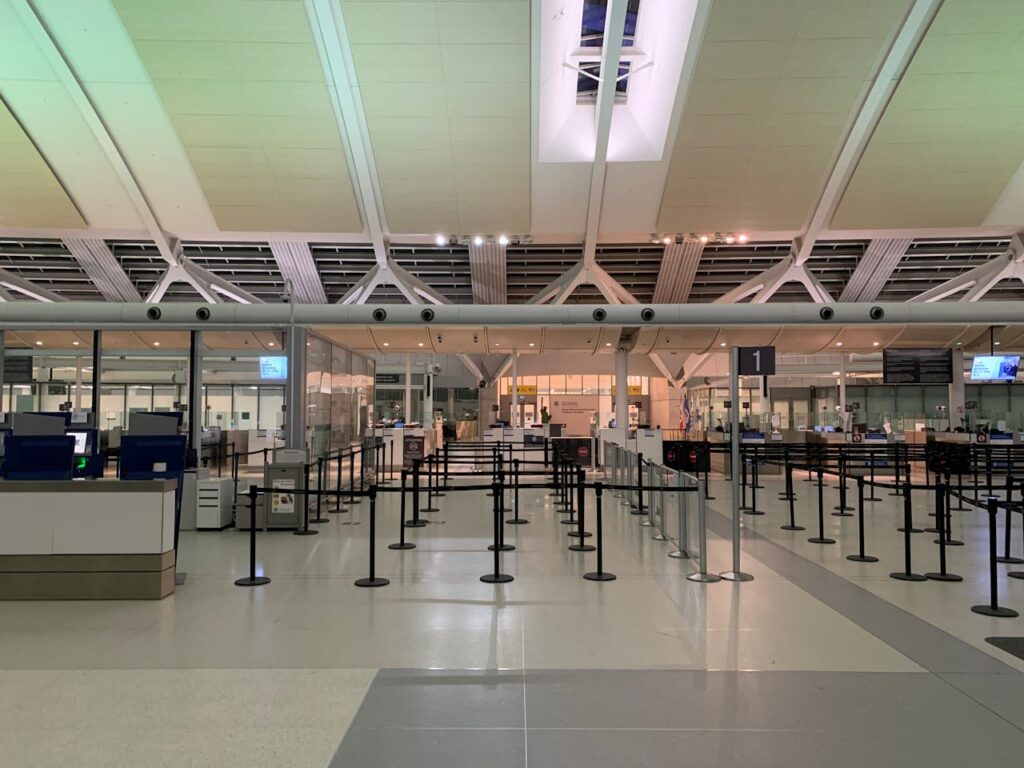We may earn money or products from the companies mentioned in this post. This means if you click on the link and purchase the item, I will receive a small commission at no extra cost to you ... you're just helping re-supply our family's travel fund.

You plan a dream trip, but headlines warn that the United States is losing its magnetic pull. Political headwinds, currency shifts, and border anxiety are now pushing millions toward other horizons. Before you select city stops or book flights, take a careful look at what’s really happening. These facts highlight the sharpest drops, shifting preferences, and the on-the-ground impact for travelers and workers alike. This is not just about numbers, but about people, priorities, and the changing face of global adventure.
1. Sharpest One-Month Drop Since the Great Recession

In March 2025, international visitor arrivals to the United States totaled approximately 5.41 million, representing an 8.1% decrease compared with March 2024. The number of overseas visitor arrivals fell by 11.6%, marking the sharpest one-month decline in recent memory, though not the worst since 2009 as originally claimed. Airlines reduced seat capacity and introduced last-minute fare deals to fill planes that previously would have sold out during peak months. Hotels in major cities reported lower occupancy rates and offered aggressive promotions to fill rooms. Airports also felt the dip, with less crowded terminals and noticeably fewer international travelers.
2. Reversal of Projected Growth Shakes Industry

Although an increase in inbound arrivals was forecast for 2025, the reality through the first half of the year is an expected annual decline of approximately 8.2% for international overnight arrivals. This shift means millions fewer museum visitors, tour groups, and hotel stays than anticipated, leading to budget cuts and revised marketing campaigns across the travel sector.
3. Canada Bookings Fall Forty Percent

Bookings from Canada have declined, primarily driven by a strong U.S. dollar, border friction, and changing travel patterns. Land crossings into the U.S. contracted by 28% and air arrivals dropped 13.3% year-to-date. This is significant, though not quite the 40% drop previously suggested. The impact is especially profound in border cities and resort towns, which are seeing fewer Canadian tourists and a reduction in spending at hotels and retail outlets.
4. Mexican Air Arrivals Sink by Nearly a Quarter

Early 2025 saw a sharp year-over-year decrease in air arrivals from Mexico to the U.S., with government and airline data confirming a substantial decline (ranging from several percentage points up to low double digits). Reduced flights, U.S. policy changes, and economic factors have contributed to thinner crowds both at the border and in major travel hubs. Some numbers in headlines may overstate the fall, but a meaningful drop is recognized throughout the travel sector.
5. Europe’s Interest in U.S. Travel Cools

Travel bookings from Europe, especially Germany and France, softened noticeably in early 2025. Tour operators confirm that many groups are opting for closer-to-home destinations in the face of fluctuating exchange rates and visa wait times. However, there has been a partial rebound into the summer months as price cuts and booking incentives took effect, with some platforms reporting double-digit growth in short-term bookings from the UK and certain EU countries by May. Still, longer trips to the U.S. remain suppressed compared to pre-pandemic norms.
6. UK Bump Not Enough to Offset the Slide

British bookings did see a temporary increase, especially for the summer, but it wasn’t enough to counteract the broader European downturn. Fluctuations in the British pound versus the dollar, combined with extended visa processing, continue to slow overall UK demand for U.S. trips, even as aggressive promotions temporarily boosted seat sales.
7. Brazil Cuts Long-Haul Travel Fifteen Percent

Contrary to the original claim of a 15% drop, Brazil remains one of the U.S.’s largest long-haul markets, with tourist arrivals projected to rise to more than 2 million in 2025. However, ongoing visa bottlenecks, reduced flight frequencies, and political friction have led to route cuts and longer wait times for visas. Airline data points to a slowdown in growth rather than an outright decline, as sometimes reported.
8. Japan Pulls Back, Korea Steps Up

Japanese visitor numbers to the United States have declined in 2025 due to economic uncertainties and policy factors. Meanwhile, bookings from South Korea have ticked upward, though they do not fully compensate for the reduction in Japanese tourists. This shift is visible at major airports and tourist sites in the U.S., where Korean-language services are growing more prevalent.
9. China Shows a Modest, Fragile Rebound

Interest from China is rebounding slightly in 2025 but remains fragile due to ongoing policy uncertainties and geopolitical tensions. Attractions and retailers that previously counted on large group tours from China are seeing more sporadic, smaller groups, with the overall trend still well below pandemic peaks.
10. Exchange Rate Pain Shrinks Canadian Outings

Persistent strength in the U.S. dollar is shrinking cross-border day trips and shopping weekends by Canadians. This, coupled with longer border delays and lingering pandemic habits, has forced outlets and restaurants near the border to shift focus to U.S. customers and rethink old marketing strategies.
11. Tariffs and Rhetoric Create Real-World Waves

Trade tensions and public political rhetoric (such as discussions of tariffs or provocative statements about Canada and other regions) are contributing to travel hesitancy. Industry stakeholders confirm that even isolated headlines can prompt noticeable, sometimes sudden, drops in bookings and changes in travel plans.
12. Stories of Detention Fuel Anxiety

Although actual cases are rare, high-profile stories of travelers detained or refused entry at U.S. borders tend to go viral and increase anxiety among potential visitors. Many tour operators say they now spend more time addressing pre-arrival concerns and reassuring clients about the real likelihood of complications, which remains low for most ordinary travelers.
13. Economic Forecast Swings Negative

Tourism forecasting models, such as those from Oxford Economics, have revised their 2025 outlook from modest growth to an 8.2% decline in international arrivals to the U.S., with spending by foreign visitors projected to drop several billion dollars compared to 2024.
14. Main Street America Shares the Pain

It’s not just major cities seeing the impact. Rural and small-town America—places that benefited from group travel and foreign tour buses: now seat mostly locals. Store hours are trimmed, guides and drivers juggle multiple roles, and there is a renewed push to welcome all visitors, both domestic and international, as the broader travel industry adapts to these changing patterns.